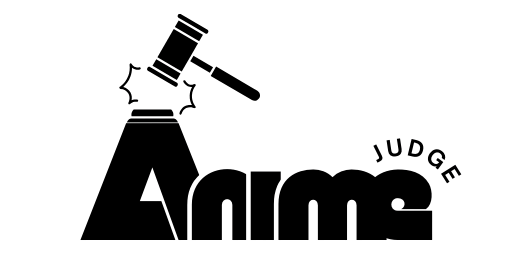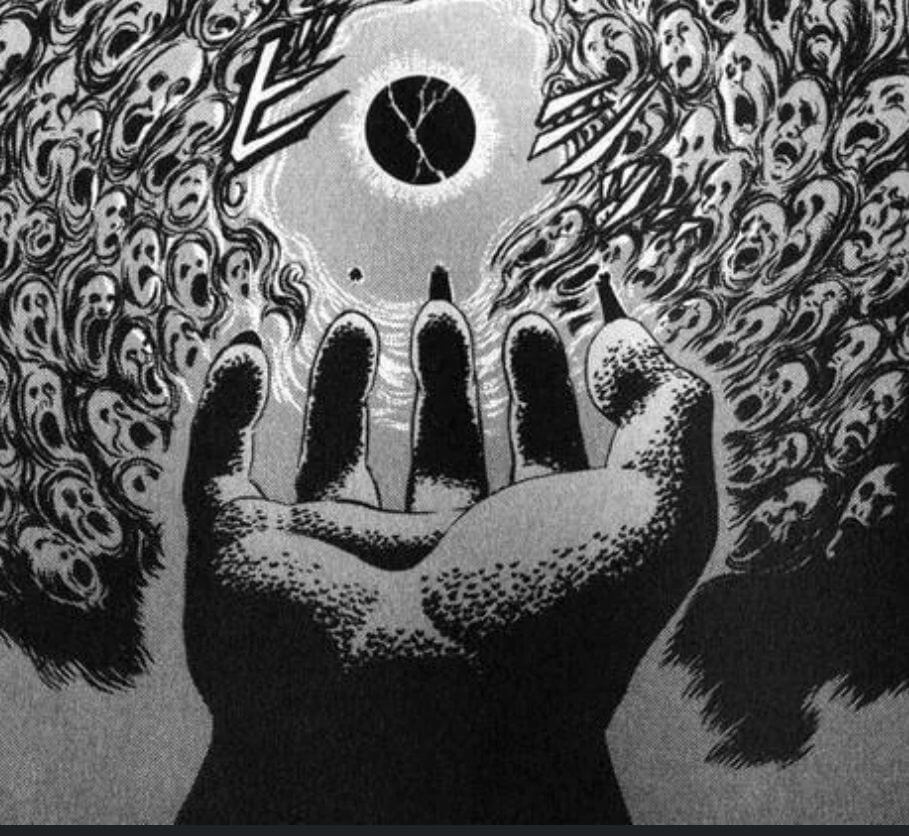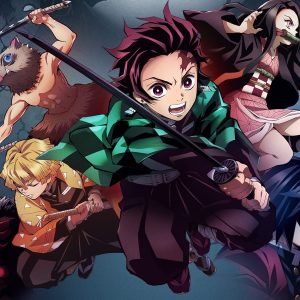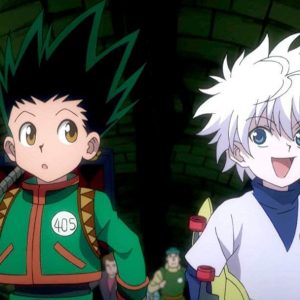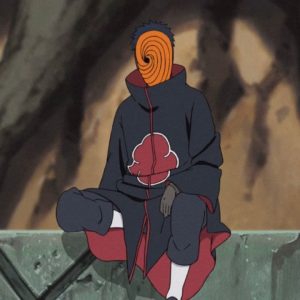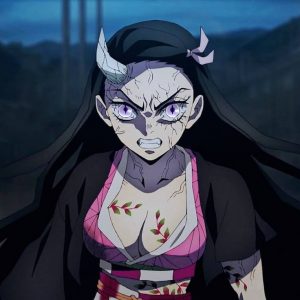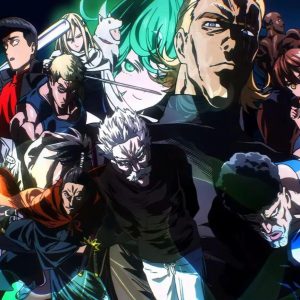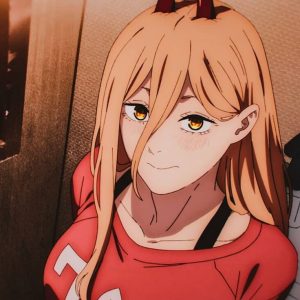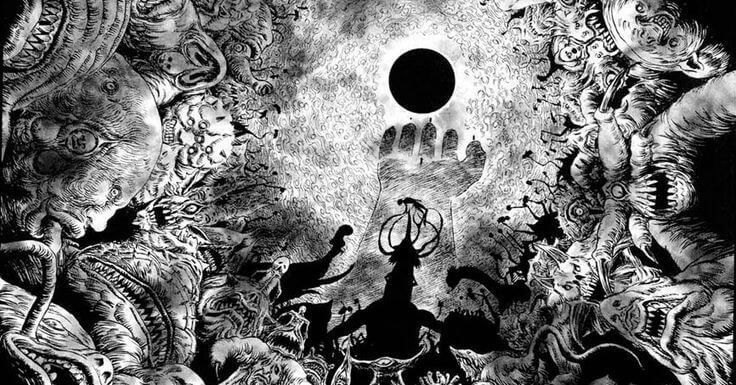
In Kentaro Miura’s Berserk, the God Hand are not just powerful antagonists — they are the embodiment of absolute evil and fate. These five supernatural entities shape humanity’s destiny, orchestrate tragedy, and stand behind the fall of both Guts and Griffith. But who — or what — are they really? Where did they come from? What is their true purpose? Let’s uncover the secrets behind the most terrifying force in the Berserk universe.
Who Are the God Hand?
The God Hand consists of five members — Void, Slan, Ubik, Conrad, and Femto (the reborn Griffith). They act as agents of the Idea of Evil, a metaphysical being believed to be the highest power in the Berserk universe. Each member was once human but transcended mortality through the Eclipse ritual, a dark sacrament that occurs once every 216 years, activated by the Crimson Beherit — the Egg of the King.
- Role: They execute the will of the Idea of Evil, manipulate causality, and transform Beherit users into Apostles through sacrificial ceremonies.
- Powers: Each member controls aspects of reality — space (Void, Femto), flesh (Slan, Conrad), and the metaphysical (Ubik) — making them virtually untouchable.
Origins of the God Hand
From Mortals to Demons
- Their Ascension: Each member was once human and used a Crimson Beherit during a moment of absolute despair, sacrificing those closest to them for immense power. For example, Griffith sacrificed the Band of the Hawk to become Femto during the Eclipse (Chapter 86).
- Void — The First? In Chapter 362, Void appears at a “temporal junction” with four other unknown entities, suggesting he may have been the first God Hand or its founder. The fate of the other entities is unclear, but Void has persisted across centuries, seemingly choosing new members.
Birth of the Idea of Evil
- Deeper Origins: The God Hand were created to serve the Idea of Evil — a being born from the collective consciousness of mankind, a response to humanity’s desire to give meaning to its suffering (Chapter 83, later omitted from official print).
- Tethered to Humanity: The Idea does not act directly; it manifests its will through the God Hand — making them the “hands” of evil in the physical world.
What Is the Purpose of the God Hand?
Manipulators of Fate
- Causality as a Weapon: While not omnipotent, the God Hand can perceive and steer the flow of causality — orchestrating major events like Griffith’s rebirth and the Great Roar of the Astral World (Chapter 306).
- Creators of Apostles: They transform desperate humans into Apostles — twisted monsters that further spread despair and evil, like the Count (Chapter 4) or Ganishka (Chapter 277).
Bringers of Darkness
- Fantasia: After Griffith’s return and the Great Roar, the boundaries between the material and astral realms collapse, birthing Fantasia — a chaotic world filled with demons and magical creatures (Chapters 306–307).
- Falconia: Under the guise of salvation, Femto establishes Falconia as a sanctuary — yet it may be the foundation for total domination by the God Hand.
Servants of the Idea of Evil
- Perpetuating Suffering: The God Hand exist to feed the Idea of Evil with human anguish and despair — offering mankind a twisted sense of purpose in their suffering (Chapter 83).
- 216-Year Cycle: The addition of new members, like Femto, implies a recurring cycle — part of a long-term cosmic plan to deepen the reach of evil.
The True Nature of the God Hand
Near-Gods, But Not Divine
- Not All-Powerful: Despite their might, the God Hand are bound by the rules of causality and limited by their metaphysical role. Skull Knight once attacked them and wasn’t immediately destroyed (Chapter 86), proving they are not invincible.
- Echoes of Humanity: Each member reflects a human vice: Slan (lust), Ubik (deception), Conrad (decay), Void (knowledge), and Femto (ambition). These traits make them horrifyingly relatable — evil, but born from human flaws.
Symbols of Corruption
- Corrupted Desires: The God Hand symbolize how desire unchecked by morality leads to ruin — as seen in Griffith’s sacrifice for his dream.
- Guts’ Ultimate Adversaries: As the enforcers of fate and pain, they are the ultimate enemies of Guts — the man who refuses to bow to destiny.
Their Role in Berserk’s Narrative
Driving the Story Forward
- Guts’ Tragedy: The God Hand caused the Eclipse — the defining trauma that pushed Guts onto his path of vengeance (Chapters 86–88).
- World-Shapers: From Griffith’s rebirth to the creation of Fantasia, they reshape the world, serving as the architects of the manga’s ever-shifting landscape.
Rivals of Skull Knight
- Eternal Conflict: The mysterious Skull Knight, particularly tied to Void, has fought the God Hand for centuries. Their rivalry hints at a larger, timeless struggle — one still far from its conclusion.
Conclusion
The God Hand are not simply antagonists — they are the convergence of human desire, metaphysical manipulation, and existential horror. Born from man and created by the Idea of Evil, their goal is to sustain despair and enforce a fate rooted in suffering. As near-divine beings, they are central to Berserk’s philosophy and plot — the dark force Guts must one day face.
Can Guts break the cycle of causality and confront the true source of evil? Only time — and Berserk’s haunting tale — will reveal the answer.
